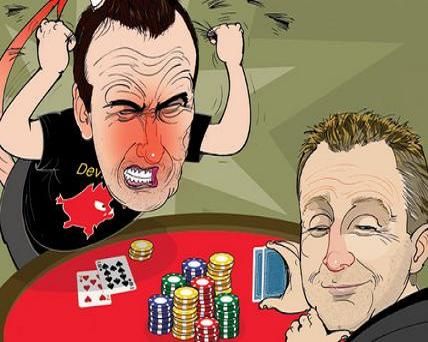
Poker is not just a game of cards; it is a game of skill, strategy, and psychology. One of the most captivating psychological elements of poker is bluffing. Bluffing involves deceiving your opponents into believing something false about your hand, causing them to make mistakes and ultimately benefiting you. In this article, we will delve into the psychological aspects of bluffing in poker.
The Art of Deception
Bluffing in poker is all about deception. Players strategize and build a false narrative around their hand to confuse and manipulate their opponents. The key lies in convincing opponents that you have a stronger hand than you actually do or vice versa. This psychological warfare can be exhilarating, as players attempt to read each other's intentions and make strategic decisions accordingly.
Observation and Reading Tells
Successful bluffing in poker heavily relies on observation and reading tells. Observing your opponents' behaviors, body language, facial expressions, and betting patterns can give you valuable insights into their hand strength and intentions. A player who fidgets, avoids eye contact, or suddenly becomes aggressive may be displaying signs of a bluff. By paying close attention to these subtle cues, you can make more accurate judgments about the likelihood of your opponents bluffing or having a strong hand.
Psychological Warfare
Bluffing also involves psychological warfare at the poker table. Skilled players use manipulation techniques to provoke emotional responses from their opponents, clouding their judgment and forcing them into making poor decisions. Psychological pressures like stress, fear, and impatience can make opponents more susceptible to falling for bluffs. By controlling the mental state of their opponents, expert bluffers can gain a significant advantage.
Creativity and Adaptability
Bluffing requires creativity and adaptability. Players must be able to adjust their bluffing techniques based on the circumstances and opponents they face. Different opponents will respond differently to various bluffing strategies. Some may be more easily deceived, while others may be more skeptical. Adapting your bluffing style and being creative in your approach is crucial in keeping your opponents off guard and maximizing your chances of success.
Calculating Risks and Rewards
Bluffing is not without risks. It involves a delicate balance between taking calculated risks and assessing potential rewards. Successful bluffers carefully weigh the information at hand, the odds, and the potential payoff before executing a bluff. A miscalculated bluff can result in significant losses, both financially and psychologically. Therefore, it is vital to make informed decisions and choose the right moments to bluff.
Knowing When to Fold
Bluffing is not a strategy that can be employed recklessly in every situation. Experienced poker players understand that sometimes folding is the best option. Recognizing when to abandon a bluff and cut your losses is a skill that separates amateur players from professionals. Letting go of a bluff and minimizing the damage can save your chip stack for more favorable opportunities in the future.
Bluffing is an essential component of poker that adds excitement and complexity to the game. It requires a deep understanding of human psychology, observation skills, adaptability, and calculated risk-taking. Mastering the psychological aspects of bluffing can give you a significant edge over your opponents, allowing you to emerge victorious at the poker table. Remember, in the game of poker, it's not just about the cards you hold, but also the mind games you play.

